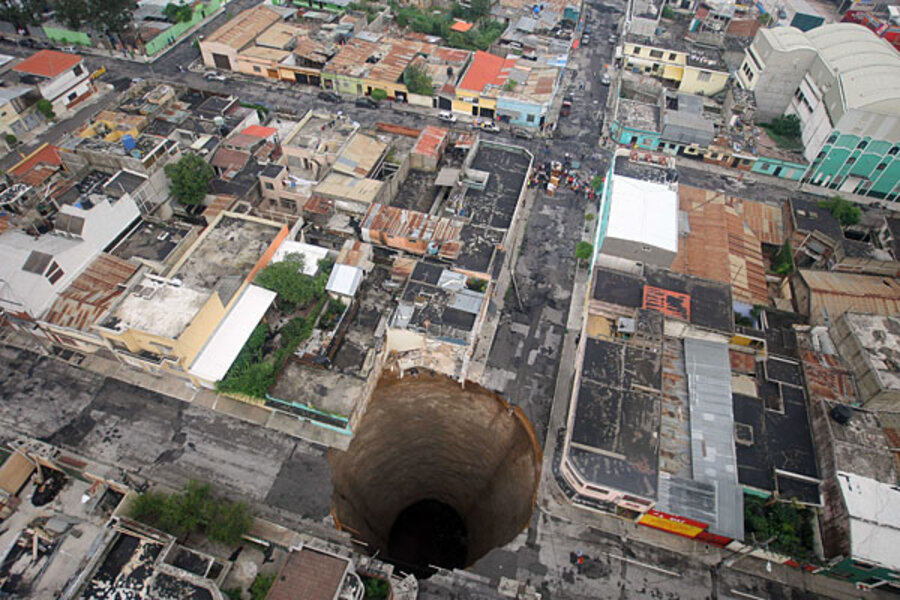Washington sinkhole: What's with all the sinkholes anyway?
Loading...
Residents were evacuated and cars were relocated after a sinkhole opened up on a sidewalk in front of a building block in Northwest Washington D.C.
Initial reports said the hole located at the 1900 block of Biltmore Street NW is about 25 feet deep. But police later described the hole as just three to four feet deep. It isn't expanding into the street, Washington City Paper reports.
The police spokeswoman told the Washington Post that officers did not measure the hole and that it's not clear where the 25-foot-deep estimate came from.
Fire officials said the sinkhole is affecting what looks like a waterpipe that may be in the process of collapsing. Meanwhile, Washington D.C.'s Transportation Department are investigating what caused the hole to develop.
The D.C. sinkhole was the fourth one in the US to make headlines after the one that killed a sleeping man in Florida earlier this month.
On Sunday, a sinkhole estimated 25 to 30 feet wide and 10 to 12 feet deep formed underneath an eastern Pennsylvania house, forcing the owner to vacate it.
A Missouri man survived an unexpected fall into a bell-shaped sinkhole which measured 18-feet deep and 10-feet wide while walking on the fairway of an Illinois golf course on Friday.
One week earlier, Tampa, Fla., had its second sinkhole in a week, about 12 feet round and 5 feet deep. It is located just two miles from the 30-feet wide and 60-feet deep that demolished a Seffner home and swallowed a man while he slept on March 3.
As science journalist Stephanie Pappas wrote in 2010, sinkholes, according to the US Geological Survey, are most common in Florida, Texas, Alabama, Missouri, Kentucky, Pennsylvania, and Tennessee. The ground in these states is rich in sedimentary rocks. When groundwater flows through these rocks, it erodes them, creating caverns that can suddenly collapse.
Earlier this month, the Monitor's Patrik Jonsson described how human activity can contribute to sinkholes.
Changes in drainage due to construction or agricultural irrigation have been known to activate mass outbreaks of sinkholes, where dozens of sinkholes can suddenly appear next to drainage wells and farm fields. Drought followed by heavy rains can also instigate sinkholes as heavy, water-logged earth presses down on limestone caves suddenly devoid of buoyant water. The two previous deaths attributed to sinkholes both involved professional well drillers whose activities cracked the top of limestone caverns, causing collapse.
"Humans can [destabilize karst landscapes] by drawing down water tables or irrigate too much, increasing the weight of the mass of materials that sits on top of the void," says Jonathan Martin, a geologist at the University of Florida, in Gainesville. "Humans can modify the environment" enough to cause sinkholes.






